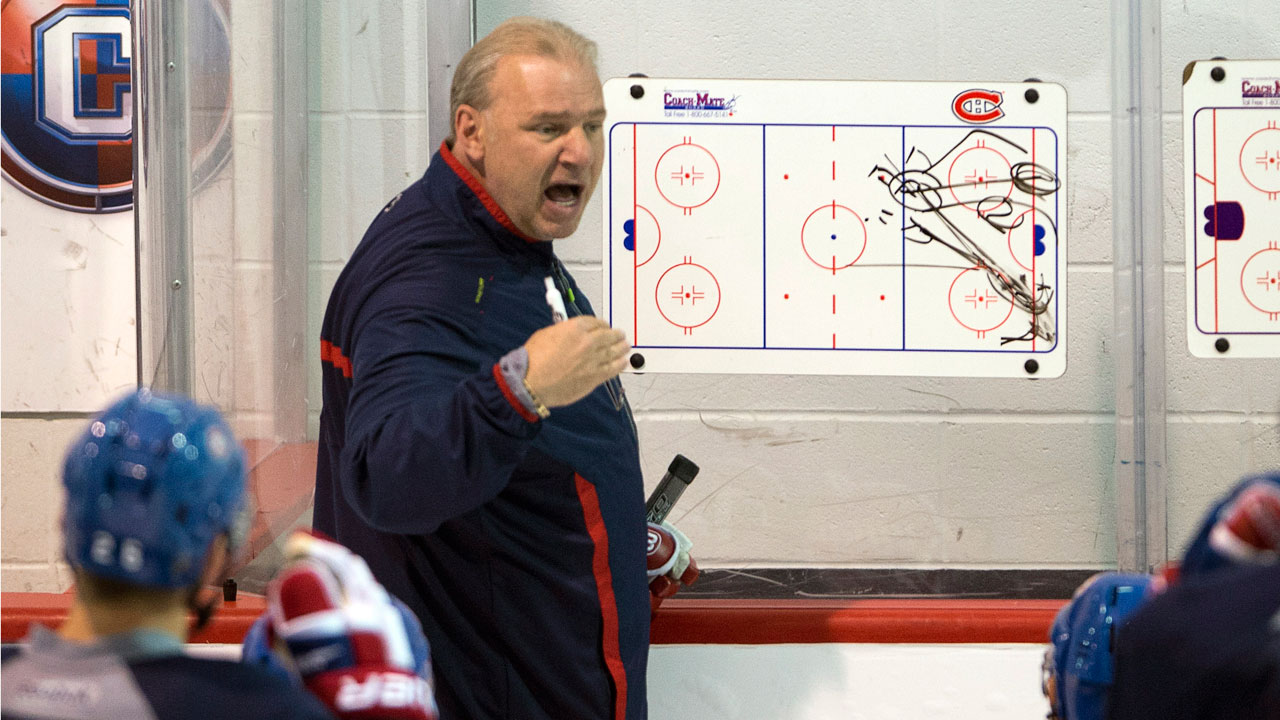NHL playoff upsets are generally forged on the backs of strong special teams, some luck and elite goaltending. And so it was with the Montreal Canadiens. While possession metrics are great at predicting long-term success as well as future Stanley Cup champions they can be overwhelmed in a small sample when superstar defencemen produce three goals and five points in seven games or your goalie outplays the statistically anointed “best goaltender in the world.”
And a lot of possession problems can be overcome when you score seven goals and shoot 22 percent playing almost six minutes a game on the power play. One of the other battles that the Canadiens dominated was goaltending. I pointed out early in the season that over-reliance on flawed data sets has put Tuukka Rask at a level that he hasn’t truly earned and while this is only a small-sample victory for Carey Price, it is more evidence that the difference in their ability is not as strong as statistically perceived.
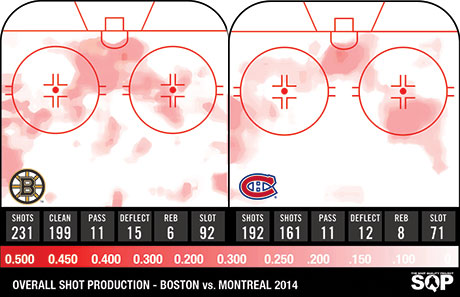
Against Boston, Montreal did a strong job of protecting Price from a lot of movement-based shots and second-chance opportunities, but they didn’t protect the slot as well. Price was exposed to three more homeplate shots per game, yet outplayed Rask—registering a .936 save percentage to Rask’s .903. Did Price get lucky at times? Sure he did. But that shouldn’t overshadow his brilliance, which almost had the Canadiens escaping Boston up 2-0 while being utterly dominated.
Most pundits have focused on these points as well as discipline and speed when discussing the Habs’ success against the Bruins. Those are relevant points and were definite factors in what the Habs accomplished, but there were also a lot of interesting little adjustments that ultimately swung the series in the Habs favour.
There were a lot of result-based explanations about Zdeno Chara looking tired and in decline. Did he make some mistakes late in the series, yes, but Chara was also tasked with shutting down Max Pacioretty. Claude Julien used the Patrice Bergeron/Brad Marchand/Reilly Smith line backed by Chara and Dougie Hamilton to negate Pacioretty and they did. So it wasn’t a matter of Pacioretty disappearing, it was a matter of the Bruins focusing on him, and it was one of the reasons Michel Therrien moved Thomas Vanek off the line early in the series. As a whole it worked: Pacioretty was able to spring loose only once against Chara during the series.
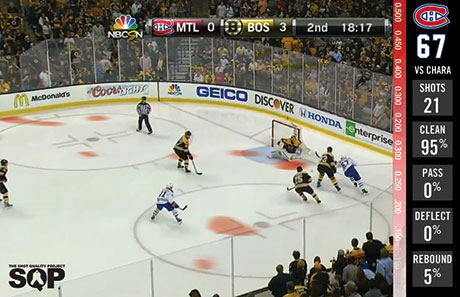
With his size and reach, Chara was able to force Pacioretty to the perimeter. Of the 21 shots the Pacioretty line registered, only one was non-clean. And when Chara was on the ice, the Pacioretty line averaged one shot from the homeplate area per game. That is dominant defence against the line that fuels the Canadiens offence and helped the Bruins to a 61 percent shot-for advantage in that matchup.
Conversely, Therrien’s decision to deploy Douglas Murray for even one minute was almost enough to cost the Habs the series. Disaster isn’t a good enough description to explain Murray’s 32 even-strength minutes.
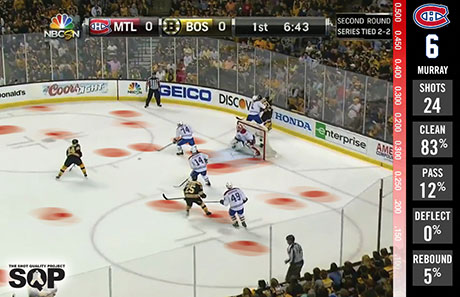
The mid-series decision to insert the immobile defender was as bad an adjustment as the Nathan Beaulieu insertion was genius. Twenty-four shots against in 32 minutes. Contrast that to a real shutdown D-man in Chara, who limited the Pacioretty line to 21 shots in 60 to 65 minutes. Murray’s ineffectiveness also worked as an anchor against the work the Canadiens depth lines were doing against the Bruins.
As the series progressed, Claude Julien kept the same lines while Therrien’s adjustments began to pay dividends. The series started out as a possession slaughter. Price was the only reason the Habs weren’t blown out of the building, but it began to morph into a series where the Habs began to match the Bruins at even strength.
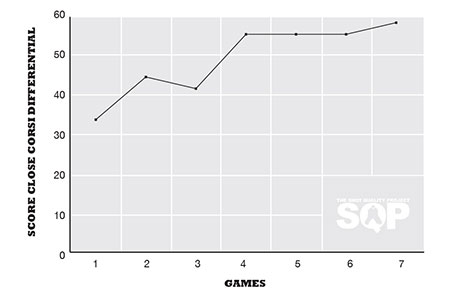
As the series wore on, the Bruins differential evened off. Viewed as a whole, Boston probably deserved better, but Montreal began to bridge the possession gap late in the series. During the first five games the Canadiens surrendered 22 extra shots from the homeplate area at even strength, over the last two that number actually favoured Montreal by one.
Those who favour possession-style hockey believe in talent over the magic intangibles of grit and toughness. The Canadiens improved because Therrien decided to push against that ingrained hockey culture and iced his best healthy lineup. He dressed rookie Michael Bournival over the Stanley Cup experienced Travis Moen and rookie Beaulieu over inferior veterans like Murray and Francois Bouillon.
Up next for the Canadiens are the Rangers, also a superior possession team (53 percent to 48 percent) and one that boasts strong depth and goaltending. The Henrik Lundqvist-Carey Price battle is the easy one to highlight and one I will look into more closely next week, but the Rangers depth helps push their possession. They rely on Mats Zuccarello, Derick Brassard and the always forgotten and underrated Benoit Poulliot as well as Brian Boyle, Dominic Moore and Derek Dorsett to push the play in their favour from the bottom six.
Like most playoff series, both teams will be searching for ways to negate the scoring stars. Martin St. Louis and Rick Nash will see a lot of P.K. Subban at even strength, and Vanek and Pacioretty will get Ryan McDonagh. The series could easily shift if the clock strikes midnight on guys like Dale Weise and Rene Bourque—that would nudge the depth battle in the Rangers’ favour. The wild card for the Canadiens is Alex Galchenyuk (a positive possession player) who, if he can get back from injury, could slot in for Brandon Prust and help bridge the possession gap.
The Canadiens are the favourite based on the standings, but the analytics crowd identified the Rangers before the playoffs as a sleeper based on their strong possession play and low PDO. When we factor in that the Rangers have only scored two goals versus the Habs in their past six games, we are probably looking at a low-scoring series. The result is we return to the familiar refrain that the series will likely be won by the team with better goaltending and special teams, but highlighted with some very subtle and interesting series-defining adjustments that will be crucial in determining who represents the Eastern Conference in the 2014 Stanley Cup final.

